
How to handle lines safely on a boat
Handling lines is an essential skill for operating a boat and keeping yourself and other crew members safe. However, it is a practice that is refined over time and often underestimated by those on cruising yachts. Every year, maritime news reports accidents involving lines—crushed hands, lost fingers, and other serious injuries—caused by improper line handling techniques on board. Technological advances have certainly reduced the number of maneuvers and lines on modern yachts and sailing boats.
Sail surfaces are increasingly concentrated in a few large sails rather than spread across multiple smaller ones. Hydraulic furlers, asymmetric spinnakers, internal reefs, and self-tacking headsails mean less rope is needed to handle the sails. In fact, modern lines have largely “disappeared” from the sleek cockpits of new yachts, which often appear completely clear and tidy.
The risk, however, is that while the number of lines to handle has decreased, the load on the remaining lines has actually increased—bringing with it significant hazards if handled incorrectly.
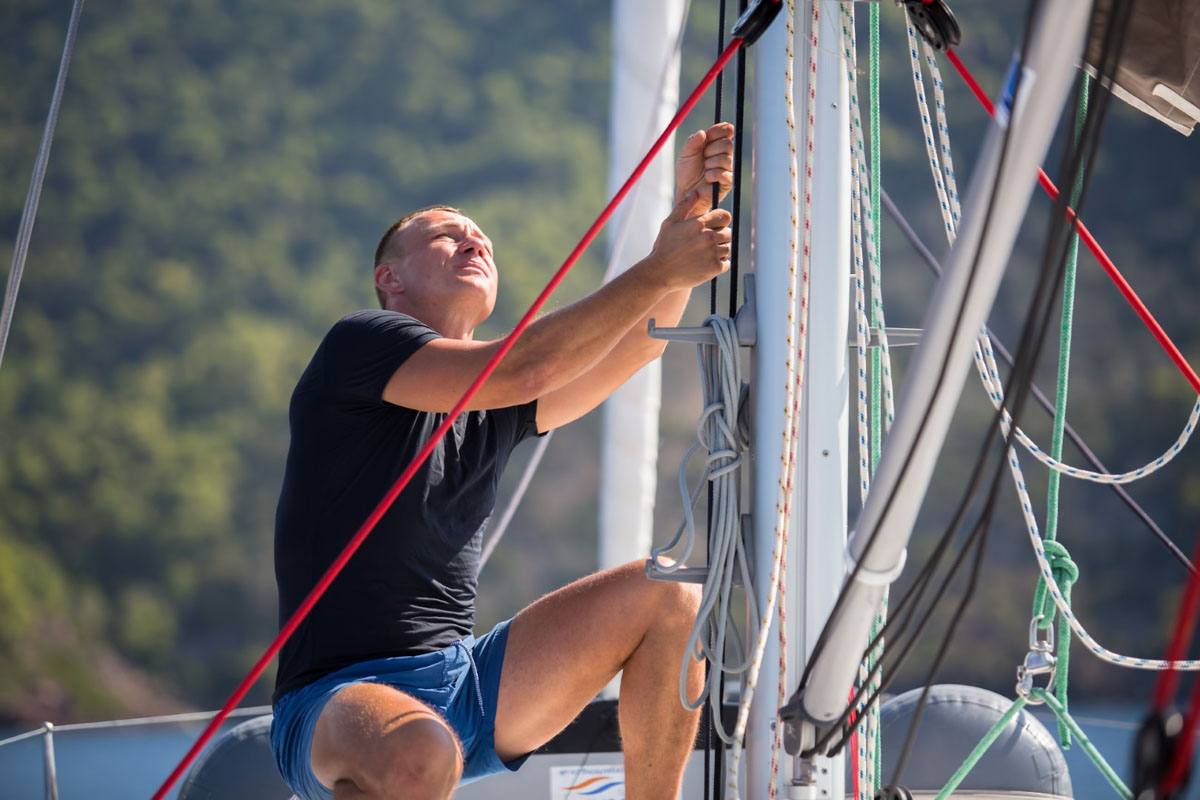
Respect loads and forces at play
A line under load is like a loaded gun. Lines are silent… until they snap. Beginner sailors often underestimate the forces at work on a sailing boat. Consider a winch, for example, which amplifies our effort according to its mechanical ratio. A modest 50:1 winch produces approximately 1,250 kg of line load from just 25 kg of hand force. That’s roughly the weight of a car—imagine if that car were attached to the other end of the halyard instead of the mainsail!
These loads, already significant, increase exponentially with the length of the vessel and the size of the onboard maneuvers—pulleys, tracks, winches, and so on.
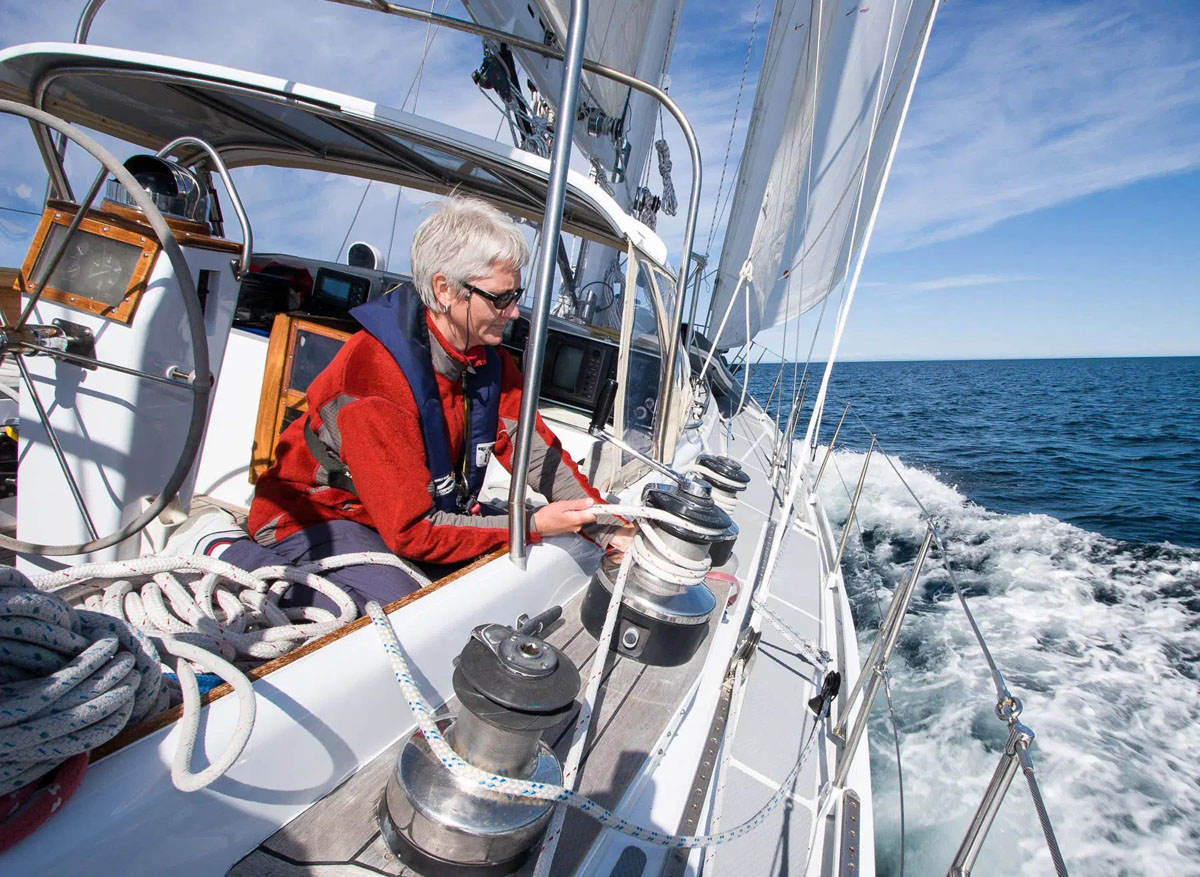
Pay special attention when using a winch
The winch should always be handled with the utmost care, as sheet and halyard tensions can be extremely high. A 50-square-meter genoa, for instance, in 25-knot winds, generates more than 650 kg of load at the sheet point. One recommendation is to trim the line with hands away from your body, alternating arms to maximize leverage. For safety, keep your hands clear of the winch drum as well, in case a sudden load causes the line to slip.
When performing a maneuver at the winch, always monitor both the drum and the effect on the sail or other equipment. Never trim with your back facing the bow. During maneuvers, knees should be protected, the back straight, and in strong winds, gloves are strongly advised. Inexperienced crew members require detailed instructions and demonstrations from the skipper on using the onboard winches.
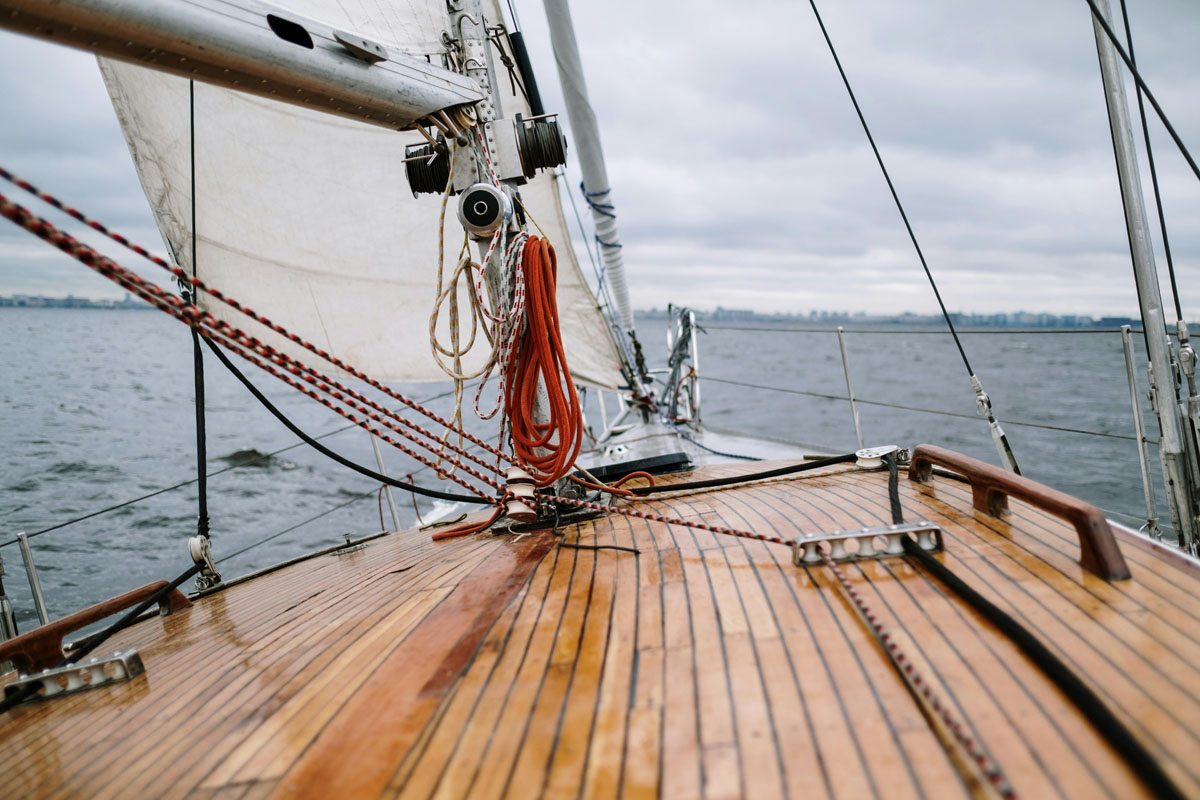
Watch out for flogging sail lines
Another danger comes from sails that, for some reason, are left flogging violently. In such conditions, the corresponding sheets can act like whips, striking the body—or worse, the face or head—unexpectedly. Sailors have reported serious injuries to the eyes and ears from similar incidents. This is why it’s also important to periodically check the condition of all lines and cables on board. Fraying, unraveling, or cuts must be repaired immediately, or else one risks sudden dangerous breakages and the resulting collateral damage.
To avoid problems, always stay alert, keep everything under control, and anticipate maneuvers whenever possible. Over time, develop awareness of these dangers and avoid placing yourself in the wrong spot. Always ask yourself: “What happens if this maneuver suddenly shifts?” or “Where will an uncontrolled line end up?” and position yourself safely.
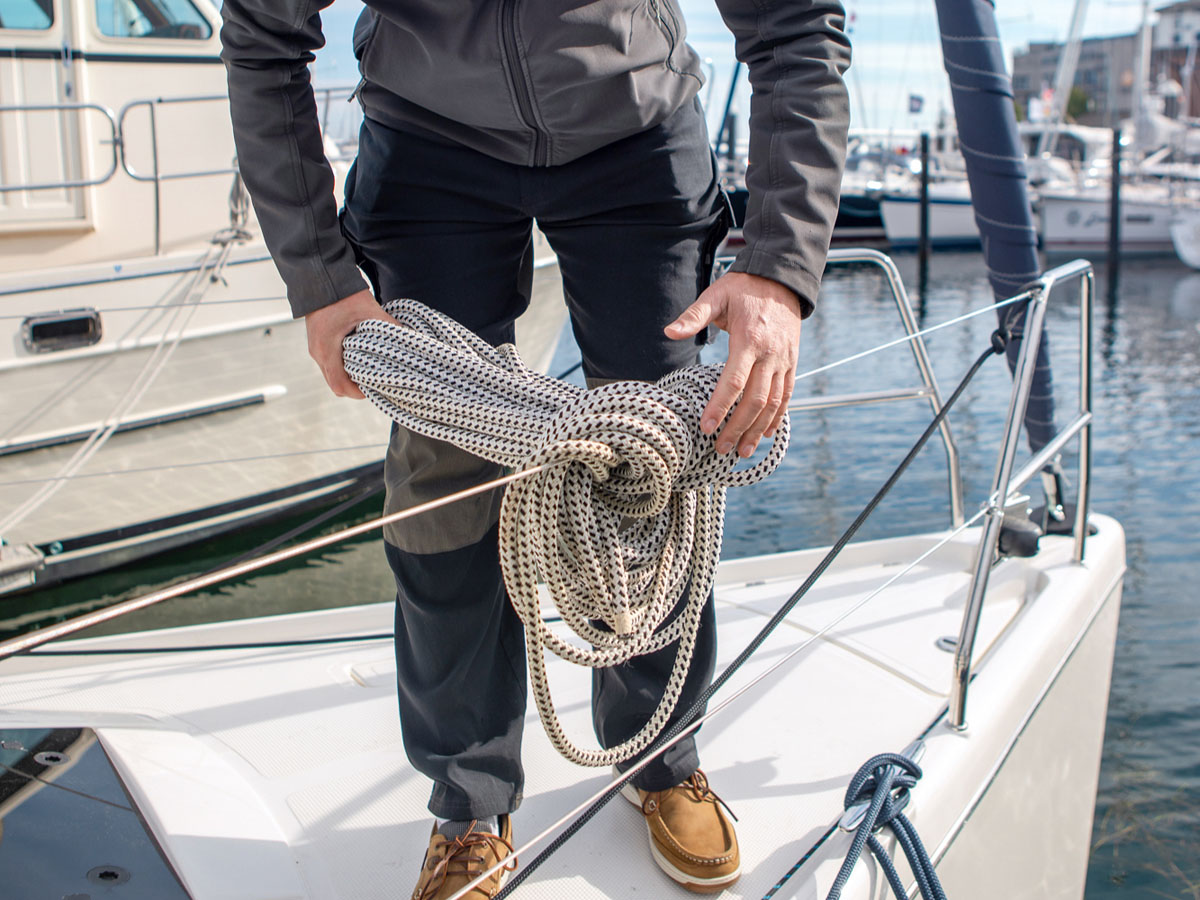
Keep lines tidy on deck
Loose or untidy lines on deck are hazardous for the crew. You can trip over them, they can obstruct or block other maneuvers, and they may even end up unintentionally in the water. Lines in use should be coiled around their associated winch or neatly spiraled next to it. Lines not in use, such as spinnaker sheets, can be coiled and secured with a knot in the block.
In conclusion, line handling on a sailing boat often occurs during high-pressure moments: docking, hoisting the spinnaker, or a sudden tack. These are all situations in which the skipper may feel stressed, which can affect the crew. Take the necessary time for maneuvers and focus on proper line management. A calm skipper prevents mistakes and allows the crew to perform at their best.
You May Also Like

Porquerolles and the Hyères Islands: True gems of the Mediterranean
30/10/2024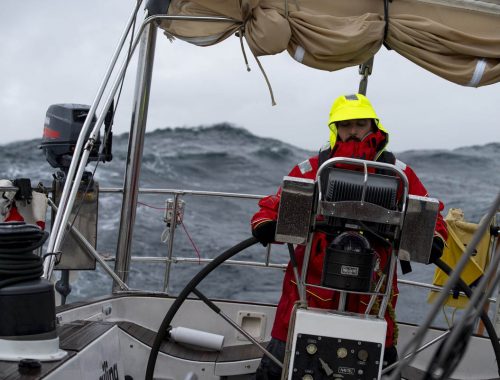
Strong winds ahead: How to steer through with confidence
23/10/2025






